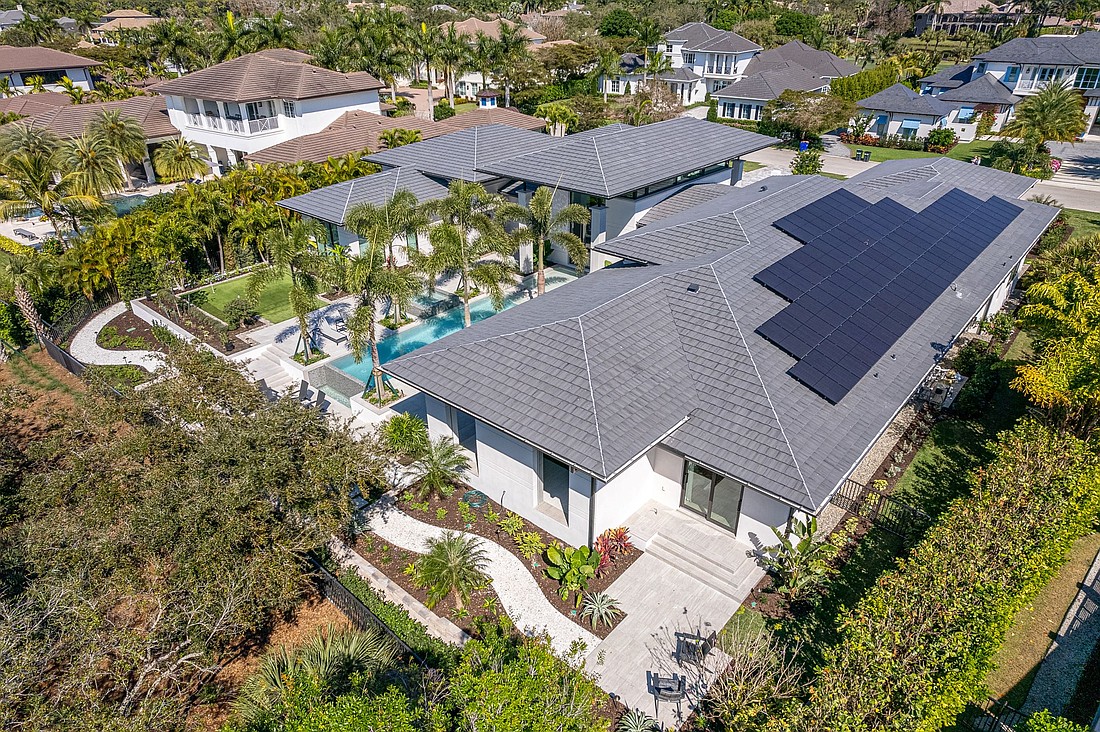- December 13, 2025
-
-
Loading

Loading

London Bay Homes in Naples recently completed its first ever solar-powered home.
The 6,000-square-foot estate, in the The Estuary at Grey Oaks, incorporates advanced and emerging technologies, according to a statement. That includes energy-storing Tesla Powerwalls in lieu of a generator — and relies on Florida sunshine for most of its power.
“We pride ourselves on leading innovation and creating a better way to build. Solar power was the next logical progression in London Bay’s more than 30-year evolution and we’re grateful to our clients who really wanted to push these boundaries with us,” London Bay President and CEO Mark Wilson says in the statement.